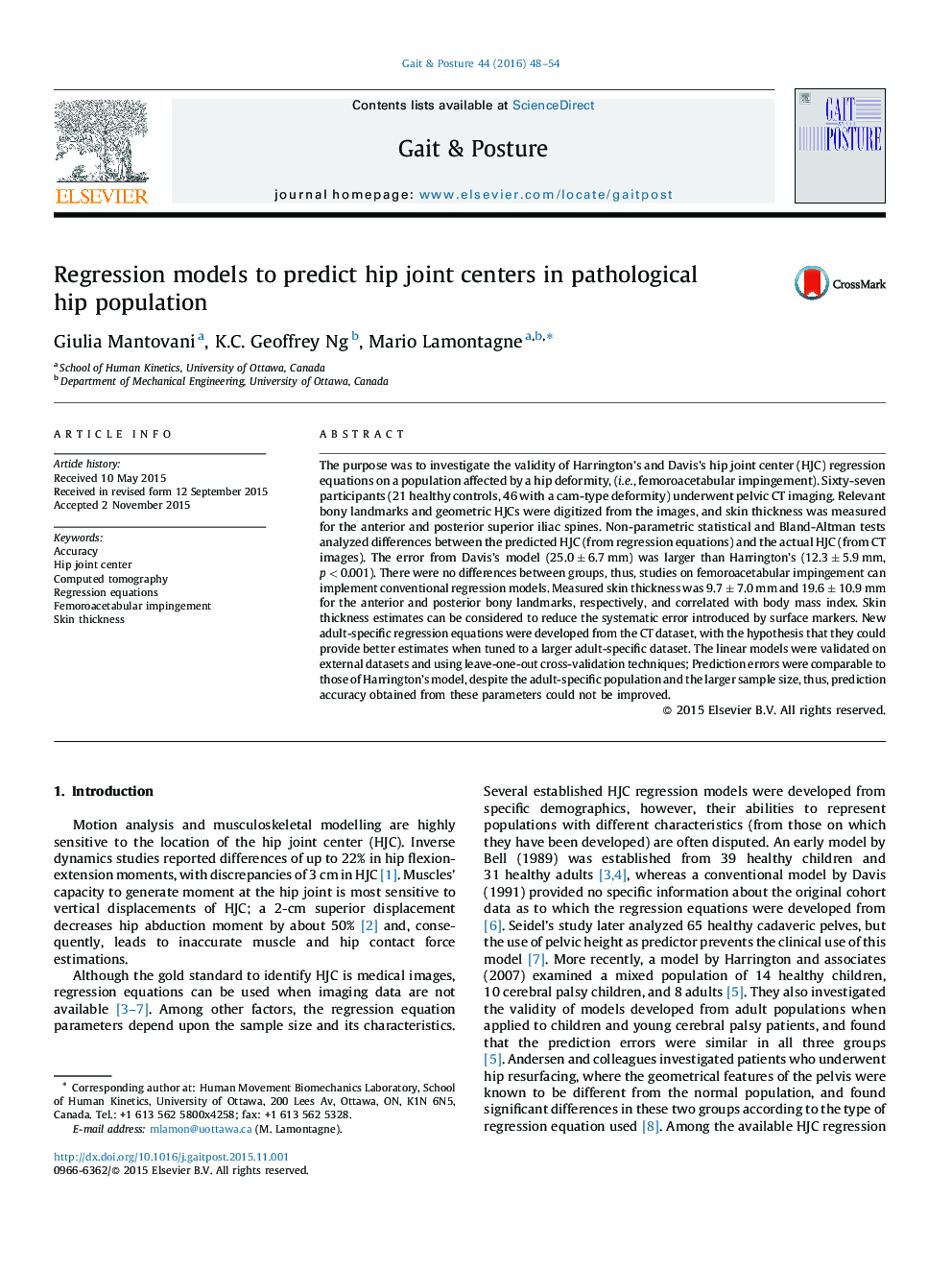| کد مقاله | کد نشریه | سال انتشار | مقاله انگلیسی | نسخه تمام متن |
|---|---|---|---|---|
| 4055535 | 1603851 | 2016 | 7 صفحه PDF | دانلود رایگان |
• Validated hip joint center regression models on cam-type deformity.
• Presence of cam-type deformity does not affect hip joint center estimations.
• Skin thickness measurements and their relation to body mass index were provided.
• Developed new adult-specific regression equations from a larger CT dataset.
• New model is as accurate as Harrington's; both performing better than Davis's.
The purpose was to investigate the validity of Harrington's and Davis's hip joint center (HJC) regression equations on a population affected by a hip deformity, (i.e., femoroacetabular impingement). Sixty-seven participants (21 healthy controls, 46 with a cam-type deformity) underwent pelvic CT imaging. Relevant bony landmarks and geometric HJCs were digitized from the images, and skin thickness was measured for the anterior and posterior superior iliac spines. Non-parametric statistical and Bland-Altman tests analyzed differences between the predicted HJC (from regression equations) and the actual HJC (from CT images). The error from Davis's model (25.0 ± 6.7 mm) was larger than Harrington's (12.3 ± 5.9 mm, p < 0.001). There were no differences between groups, thus, studies on femoroacetabular impingement can implement conventional regression models. Measured skin thickness was 9.7 ± 7.0 mm and 19.6 ± 10.9 mm for the anterior and posterior bony landmarks, respectively, and correlated with body mass index. Skin thickness estimates can be considered to reduce the systematic error introduced by surface markers. New adult-specific regression equations were developed from the CT dataset, with the hypothesis that they could provide better estimates when tuned to a larger adult-specific dataset. The linear models were validated on external datasets and using leave-one-out cross-validation techniques; Prediction errors were comparable to those of Harrington's model, despite the adult-specific population and the larger sample size, thus, prediction accuracy obtained from these parameters could not be improved.
Journal: Gait & Posture - Volume 44, February 2016, Pages 48–54
